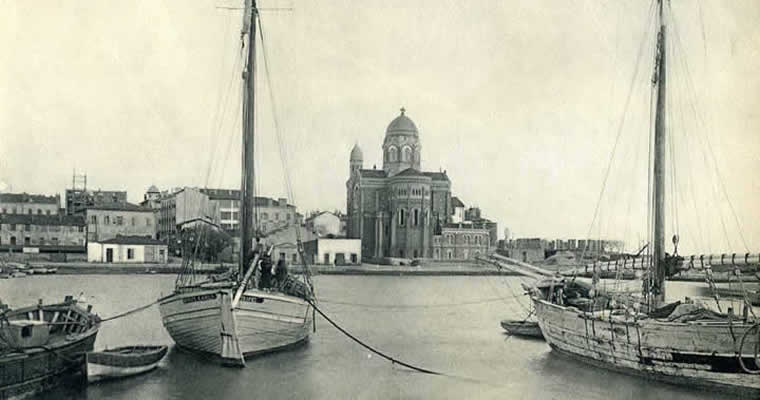
Historic overview
“To know where we are going, we must know where we come from.” Following this adage, we recount the history of the city of Saint-Raphaël, starting from when humans first settled in the area.
Prehistory
Although the earliest artefacts of a human presence, for example, tools and arrows, date back to the Palaeolithic era, the first permanent settlements are thought to date back to the Neolithic era. The collective burial sites, along with the numerous and imposing dolmens and menhirs found in the region are evidence of human activity in this period.
The Roman Empire
The shipwrecks that cover the seabed in the region provide evidence that the region was a prominent Roman commercial hub. When Fréjus was called Forum Julii and when Cesar ruled the Mediterranean, Saint-Raphaël was even then a renowned seaside resort. Epulias, as it was once called, welcomed some of the wealthiest Roman families during the summer!
The Middle Ages
Numerous Barbarian invasions accelerated the fall of the Roman Empire, and the region suffered a period of chaos and plundering. However, by the 4th century the region was at peace again. It was during this time that Saint Honorat lived as a hermit in what is now known as the Saint Honorat cave before his exile to the “Iles de Lérins” in the bay of Cannes where he founded his monastery. His presence made the town an important pilgrimage destination.
From the 16th to the 18th centuries
It was in this period that Saint-Raphael created its coat of arms, which is still used today.
It shows Raphael the Archangel accompanied by a young man named Tobie or Tobit. It is believed that Raphael saved Tobie’s father from blindness, and this legend explains the origin of the name of the city!
The French revolution and the Empire era
In 1794, just after the revolution, Saint-Raphael briefly changed its name to Barraston, from Barras, one of the members of the first government.
After his Egyptian campaign, Saint-Raphaël welcomed the Emperor Bonaparte. Ironically, he would return one more time for his departure on his way to exile on Elbe Island.
Modern times
The end of the 19th century is when Saint-Raphaël began to look as it does today. The city prospered thanks to commercial activity which included the exportation of ceramics, esterellite rocks and cork. Felix Martin, a famous engineer and former student of the “Ecole Polytechnique”, raised the city to the standards of a modern seaside resort. The Casino was built along with numerous Palladian style villas. The basilica Notre Dame de la Victoire, with its unique Bizantine style, was built at the same period, thanks to the architect Pierre Aublé.
The construction of the train line Paris-Lyon-Marseille, would give Saint-Raphaël another opportunity to accelerate its development as a tourist destination. It also attracted many artists who come to enjoy the climate and the scenery. Just to name a few, Gounot, Georges Sand and Maupassant spent time in Saint-Raphael.
The most recent history goes back to 1944 when American Troops landed in the Dramont on August 15th 1944 for a military operation code named Camel-Green.
Today, Saint-Raphaël is one of the most popular seaside resorts, and it accommodates the highest number of visitors in the Var region.



